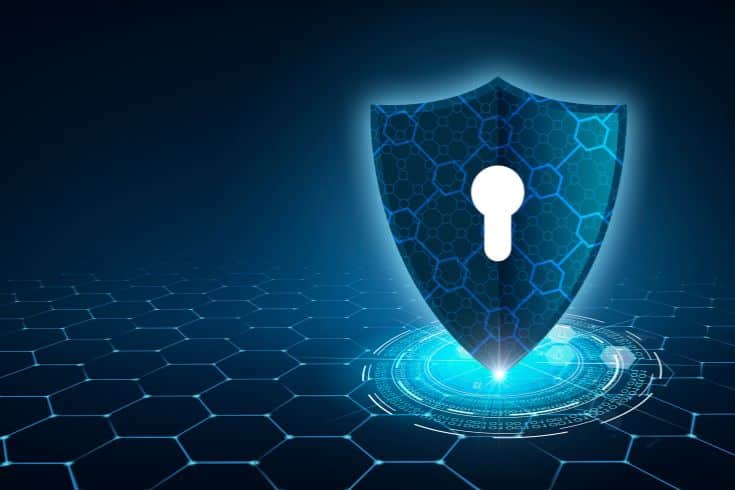
INBISCO QHSE Community
8 Oct 2024
Two major directives on critical and digital infrastructure have recently entered into force, which will significantly improve the EU's resilience against both online and offline threats, ranging from cyber-attacks to crime and risks to public health or natural disasters.

This new rule is a response to recent threats targeting the EU’s critical infrastructure, attempts that put our collective security at risk. Already in 2020, the Commission presented a proposal to drastically improve EU legislation on the resilience of critical entities and the security of network and information systems.
The directives that have entered into force are:
The European Member States have until the end of 2024 to integrate the directives into their national legislation. Both directives require the implementation of a duty of care and a reporting obligation, which will apply to both public and private organisations in specific sectors.
In this article, we will provide you with an easy-to-understand explanation of the obligations of the CER and NIS2 directives and the sectors to which they will apply. This will give you the opportunity to form an idea of the obligations that you as an organisation may have to meet by the end of 2024.
With recent developments in technology, there are increased security risks for our society and economy, especially due to an increase in phishing attempts, malware and ransomware attacks and other cyber threats. To address these challenges, the EU has been working on the Network and Information Security (NIS2) Directive since 2020. It is designed to improve the digital and economic resilience of the member states.
The NIS2 Directive deals with risks that threaten network and information systems, such as cybersecurity risks. The implementation of this directive should contribute to more European harmonization and a higher level of cybersecurity for companies and organizations. The NIS2 Directive is the successor to the first NIS Directive.
The NIS2 Directive covers sectors that were already covered by the first NIS Directive, but also includes a number of new sectors. This increases the number of public and private organisations covered by the Directive.
The striking difference with the first NIS Directive is that organisations that are active in the aforementioned sectors and that meet certain criteria automatically fall under the NIS2 Directive. These criteria define them as ‘essential’ or ‘important’ entities.
Essential sectors
Important sectors
These are organisations that are considered critical entities under the CER Directive and are automatically classified as essential entities under the NIS2 Directive. This category includes large organisations active in a sector from the essential sectors.
An organisation is considered large if it meets one of the following criteria:
This category includes medium-sized organisations that are active in sectors that are considered essential or important under the NIS2 Directive. They play an important role in the economic and social stability of the EU, despite not being classified as ‘critical’.
An organisation is classified as medium-sized if it meets one of the following criteria:
If your organization falls under the NIS2 Directive, there are several obligations you must comply with:
Failure to comply with the NIS2 directive can result in significant fines and reputational damage. It is therefore essential to take these guidelines seriously and comply with the requirements.
Via INBISCO-Secure we can record and disclose the principles regarding security. In the established Information Security strategy, the policy and the preconditions for a secure working method are outlined. Taking these preconditions into account, the working method is recorded in the Information Security Management System (ISMS) by means of processes and work instructions, in combination with all relevant (policy) documents. Processes and documents are now safely stored in the ISMS and can be easily shared with the organization.
The follow-up of the various Information Security files, with the associated actions, can be monitored in a simple manner. Which files are still open? What is the status of the actions and is the handling going according to agreement? These are topics that can be easily managed via the dashboard of our software. All relevant information and documentation is stored centrally and is easy to access and view.
The recorded data can be quickly assessed and analyzed via adjustable reports and graphs. After the analysis, you have direct insight into the improvement opportunities of your organization and the improvement actions can be initiated. This is a recurring process; the security of information is continuously monitored and, if possible, increased.
The concept of CER, The Critical Entities Resilience (CER) Directive, introduced at the same time as the NIS2 Directive, aims to improve the resilience of critical entities to physical threats.
This Directive applies to both public and private organisations operating in sectors that are essential for the maintenance of vital societal functions, health, safety, security, economic well-being or social well-being of citizens.
The impact of these new guidelines can be significant, depending on the size and nature of your organisation. It is therefore essential to have a clear understanding of what these guidelines entail and how to meet the requirements.
The Directive covers a variety of sectors, such as energy, transport, healthcare, drinking water supply, digital infrastructure and financial services, among others. Both public sector organisations and private sector institutions within these sectors can fall under the scope of the CER Directive.
It is essential that organisations operating within these sectors are aware of the implications of the CER Directive and implement the required measures to comply with the regulations. This is not only to meet legal requirements, but also to improve the resilience of the organisation and to be able to continue to function in the event of threats.
It is crucial for organizations subject to the CER & NIS2 directive to take proactive steps and prepare.
Here you will find our latest blogs, events, online demonstrations and customer stories. Stay up to date with the latest developments and be inspired by practical examples in the field of quality, health, safety and environment.